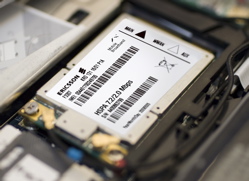Ericsson and Intel: Carrier-subsidized netbooks are the future
The popularity of the netbook is undeniable. In just two years it has risen from a product of uncertain necessity to a killer gadget that makes up as much as thirty percent of all notebook sales for its leading manufacturers.
But where is the form factor headed?
Leading wireless telecommunications company Ericsson made a prediction today in the form of a new mobile broadband module designed specifically for netbooks. The Swedish company sees trends developing in netbook sales and designed its new F3307 mobile broadband module with them squarely in mind.
Between now and 2014, Ericsson estimates, more than 300 million netbooks will be sold; and by 2011, more than one third of them will have been sold through wireless operators as a part of mobile broadband subscriptions.
 So manufacturers are going to need an affordable embedded broadband unit that can be easily integrated into as many existing mobile broadband networks as possible. This is where Ericsson's F3307 comes in. The 7.2/2.0 Mbps HSPA module has been pre-approved by mobile operators in more than 75 countries, which will speed up the final certification process for new devices.
So manufacturers are going to need an affordable embedded broadband unit that can be easily integrated into as many existing mobile broadband networks as possible. This is where Ericsson's F3307 comes in. The 7.2/2.0 Mbps HSPA module has been pre-approved by mobile operators in more than 75 countries, which will speed up the final certification process for new devices.
Furthermore, Ericsson is working with Intel on its next-generation netbook platform known as Pine Trail-M, which will replace the successful Atom N270-based Diamondville platform.
Intel's Director of Marketing Erik Reid said today, "By working closely with Ericsson, we are enabling manufacturers to address broader market needs at a faster time to market through new channels, such as mobile operators, with our next-generation netbook platform, Pine Trail-M."